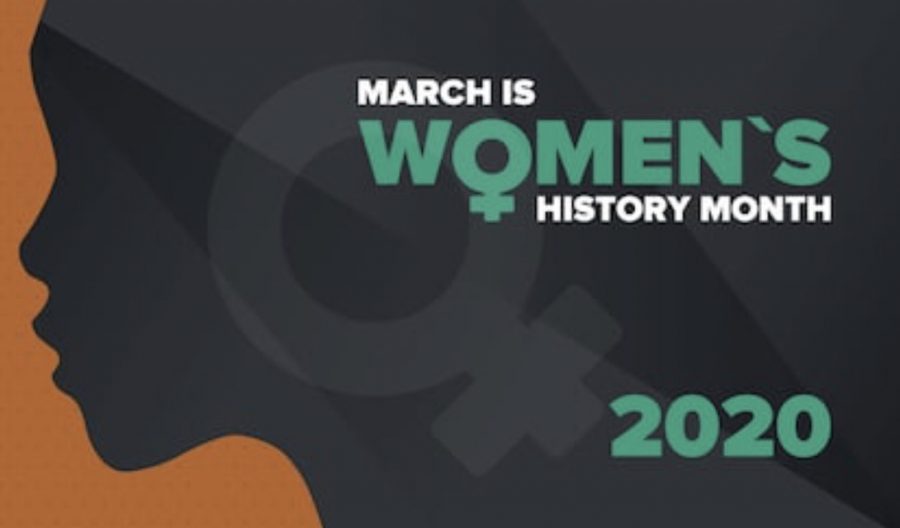The real problem with the Pink Tax
Women’s Wednesday: For Women’s History Month, The Cat’s Eye View takes a look at the issues impacting women today.
Women’s Wednesday: For Women’s History Month, The Cat’s Eye View takes a look at the issues impacting women today.
March 11, 2020
March is annually proclaimed as Women’s History Month, as the United States celebrates the contributions women make to the world, along with raising awareness of the problems they are still facing today. One of the issues that still affect women is the ‘Pink Tax’.
To be clear, the ‘pink tax’ is not an additional tax, but an upcharge often placed on feminine products, most prominently on hygiene products, but on many other consumer goods that are targeted to women.
The pink tax is a form of gender-based pricing that is often put on products that women and non-binary people use. Much of the time, a similar cheaper product can be found targeted to men. Feminine products are usually pink, pretty, and embellished with flowers, while men’s products are usually darker packaging and have a rugged look. Although, when the products are shaving cream or razors, the contents are the same, but the prices are anything but equal.
“Pink tax is a living example of sexism that is still prevalent today. In today’s standards, body hair on women is considered dirty, or unprofessional. For men, no one bats an eye if their whole body is coated in it. Not only are women disrespected by the absence of equal pay, but we are clowned by being charged more of the money we don’t make,” said senior Salome Siradze.
New York City’s Department of Consumer Affairs did a study on gender pricing, revealing that “On average, across all five industries, DCA found that women’s products cost 7 percent more than similar products for men.” They went on to specify that women’s products cost on average 13% more in personal care products and 8% more on adult clothing.
On most products, the price difference between men’s and women’s products can be anything from ten cents to a few dollars. When it is only a few dollars, it is easy to overlook this surcharge, but over time it adds up. In a 1994 study done by the state of California, it is estimated that the ‘pink tax’ costs women an estimated $1,350 a year. The United States Congress’ Joint Economic Committee adjusted the amount to inflation and in 2016 dollars it would be $2,135. “Not only are women statistically making less than men but having women pay extra in taxes is unfair. Overtime this tax adds up in money that could have been saved” explained Senior Ah Lim Byun.
Furthermore, this upcharge is spread across the marketplace in different areas. In 1992, NYC’s Department of Consumer Affairs found that when women bought used cars, they were twice as likely to be offered a higher price in comparison to males. In 1996, the California Assembly Office of Research discovered that 64% of dry cleaning services charge more to clean a women’s blouse than a men’s button-up. The impact of this discriminatory ‘pink tax’ is vast and appears across varying industries.
In 1995, California took a big step towards abolishing the ‘Pink Tax’ when they passed the Gender Tax Repeal Act. Similarly, other states including California started to ban the Tampon Tax, which is a real state sales tax on items like liners, pads, tampons, and hygiene cups because they are not deemed by the guidelines as medically necessary. Many people would disagree with that determination. “I think it is unfair and quite frankly sexist to charge women more for essential products that they need,” said sophomore Anthony Berrios. New Jersey, Pennsylvania, New York, Rhode Island, Florida, Nevada, Minnesota, Illinois, Massachusetts, Connecticut, and Maryland joined California in banning the tax.
On April 4, 2019, Rep. Jackie Speier of California, reintroduced the Pink Tax Repeal Act and if passed, it would allow state attorney generals to go directly after businesses that price genders differently. Rep. Speier was the one that introduced the Gender Tax Repeal Act in California.
Even if the ‘pink tax’ or tampon tax were to be removed in all states, it is still not affordable for many to purchase necessary hygiene products. This includes both young people and low-income families. According to The Tampon Tax, an editorial by The New York Times, “In New York, a City Council member, Julissa Ferreras-Copeland, is working on legislation to require that all public schools in the city provide free [feminine hygiene products] in restrooms.” Small changes like these will allow for these products to be seen as the medically necessary items they are.
The facts are clear, the pink tax is a very real example of discrimination impacting women today. What we pay for the same product should be simple, black and white, not pink or blue.




